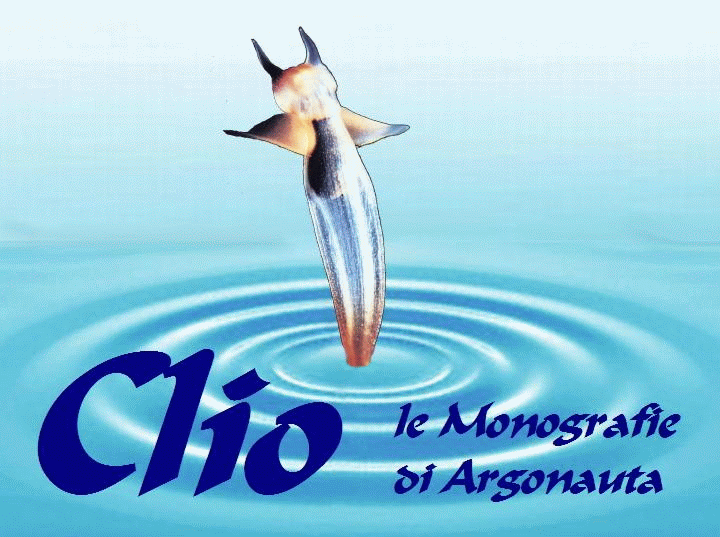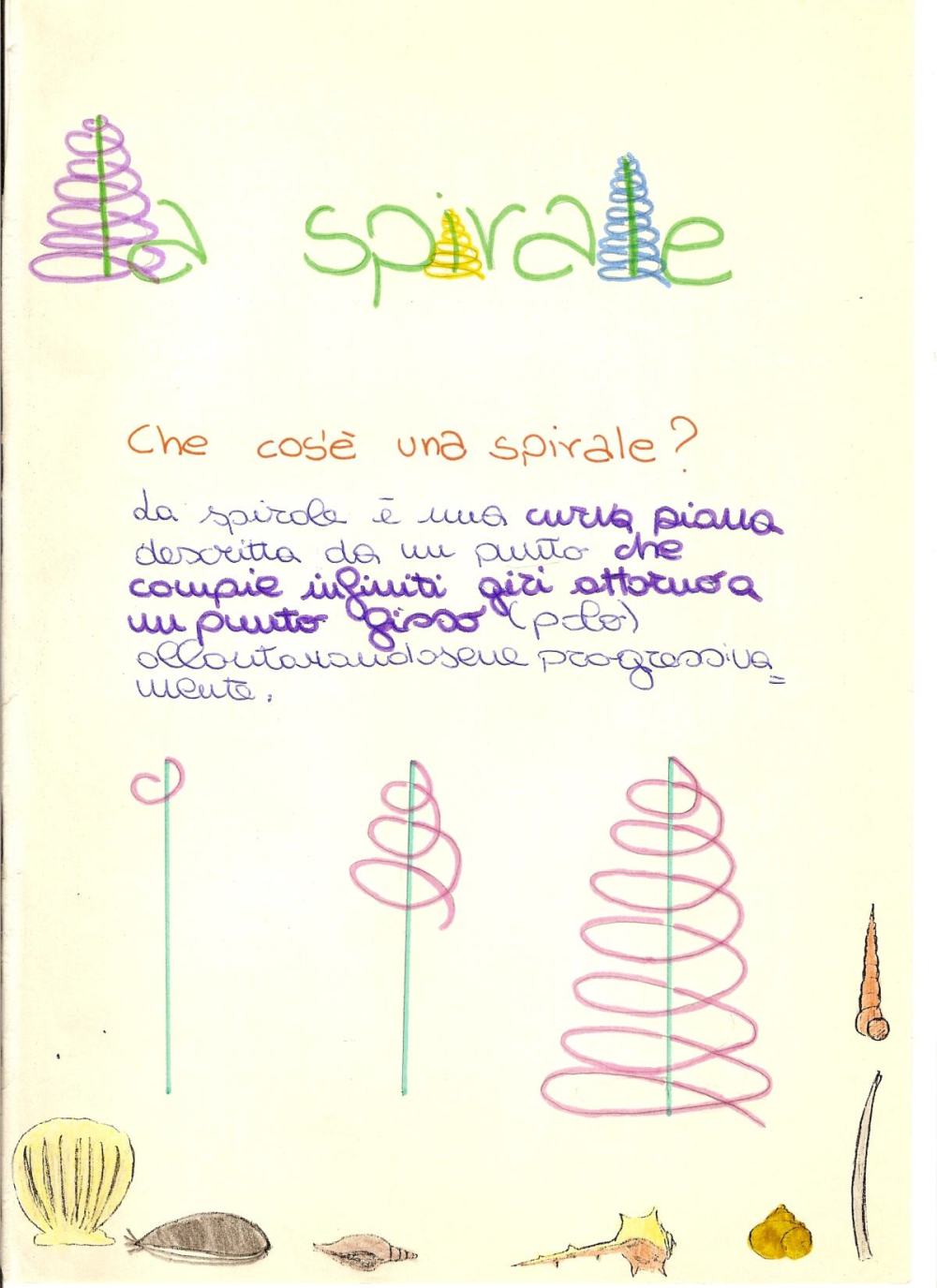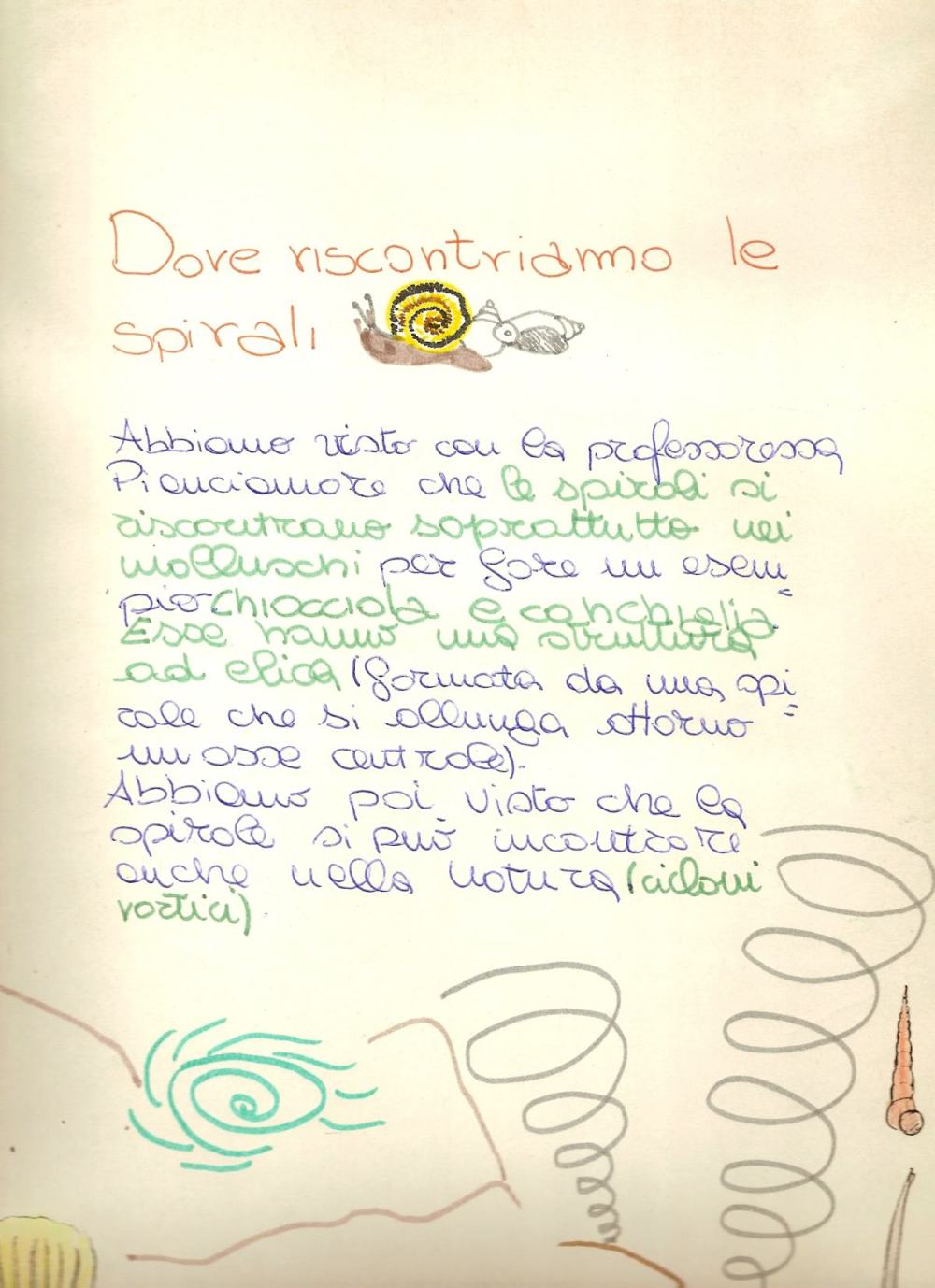
Clio supplemento a Argonauta n. 7-12 2011

back to index
TRANSLATION
PAG. 1
Now we want to give you an idea of what we experience, although for reasons of space and time, we can not precisely describe all the activities. We explain briefly just some. We would like to start talking about our studies on the environment and the sea creatures that live in it, but since we can not dwell too much talk of MOLLUSCS in particular, because we were fascinated by their lives, what amazes us is like an animal apparently so easy to build real works of art, the shells. The mollusk builds around his body a calcareous shell, but while this shell grows to adapt to the development of his body. We found that the only form that allows this growth, without which the animal entrapment inside the cone. The primitive cone-shaped shells were too fragile. For natural selection favored those species that were wrapped around the cone in a spiral, like the shells that we see today. The winding spiral that develops in space is called Helix.
PAG. 2
The cone, in contrast to other geometric shapes, may grow in length while maintaining equal proportions between height and diameter of the base circle. Then, is the form of shell more comfortable for an animal. The molluscs have adopted this form from the earliest zoological eras. The cone, however, is too cumbersome and too fragile so, over time, have begun to be wound on themselves to form a spiral, said Archimedes', consists of a cylinder rolled on itself in which the proportions are not maintained (we can think of a rope wound on itself). The shells, as the Nautilus, we observe a equiangular spiral. Maggiora the part of the shells, however, shows a spiral form where a displacement has occurred also in the plane of winding of the cone so as to form a spiral helix.
PAG. 3
What is a spiral?
The spiral is a plane curve described by a point that fulfills endless laps around a fixed point (pole) which moves away progressively.
PAG. 4
Where we find spirals.
We have seen that the spirals are mainly found in shellfish, for example: scroll and shell. They have a helical structure (formed by a spiral that extends around a central axis). We then saw that the spiral can also be met in nature (tornadoes, vortices, plants
Now we want to give you an idea of what we experience, although for reasons of space and time, we can not precisely describe all the activities. We explain briefly just some. We would like to start talking about our studies on the environment and the sea creatures that live in it, but since we can not dwell too much talk of MOLLUSCS in particular, because we were fascinated by their lives, what amazes us is like an animal apparently so easy to build real works of art, the shells. The mollusk builds around his body a calcareous shell, but while this shell grows to adapt to the development of his body. We found that the only form that allows this growth, without which the animal entrapment inside the cone. The primitive cone-shaped shells were too fragile. For natural selection favored those species that were wrapped around the cone in a spiral, like the shells that we see today. The winding spiral that develops in space is called Helix.
PAG. 2
The cone, in contrast to other geometric shapes, may grow in length while maintaining equal proportions between height and diameter of the base circle. Then, is the form of shell more comfortable for an animal. The molluscs have adopted this form from the earliest zoological eras. The cone, however, is too cumbersome and too fragile so, over time, have begun to be wound on themselves to form a spiral, said Archimedes', consists of a cylinder rolled on itself in which the proportions are not maintained (we can think of a rope wound on itself). The shells, as the Nautilus, we observe a equiangular spiral. Maggiora the part of the shells, however, shows a spiral form where a displacement has occurred also in the plane of winding of the cone so as to form a spiral helix.
PAG. 3
What is a spiral?
The spiral is a plane curve described by a point that fulfills endless laps around a fixed point (pole) which moves away progressively.
PAG. 4
Where we find spirals.
We have seen that the spirals are mainly found in shellfish, for example: scroll and shell. They have a helical structure (formed by a spiral that extends around a central axis). We then saw that the spiral can also be met in nature (tornadoes, vortices, plants
 |
 |
Handbook of Malacology
Vorrei iniziare questo manuale dando, con gioa, la parola a i miei cari ragazzi e, per questo, riporto integralmente alcune pagine delle osservazioni sui "Libri" da loro scritti e che descrivono le attivitą sperimentali effettuate di volta in volta nel Museo. Per facilitare la lettura puoi ingrandire la pagina con un click.
Let me start this book by giving, with joy, the word to my dear boys and, therefore, carry a few pages full of comments on the "Books" from their writings that describe the experiments made from time to time in the Museum. For easier reading, you can enlarge the pages with one click.
Let me start this book by giving, with joy, the word to my dear boys and, therefore, carry a few pages full of comments on the "Books" from their writings that describe the experiments made from time to time in the Museum. For easier reading, you can enlarge the pages with one click.
 |
 |
 |
 |